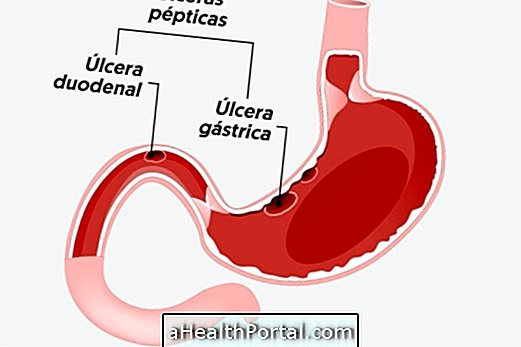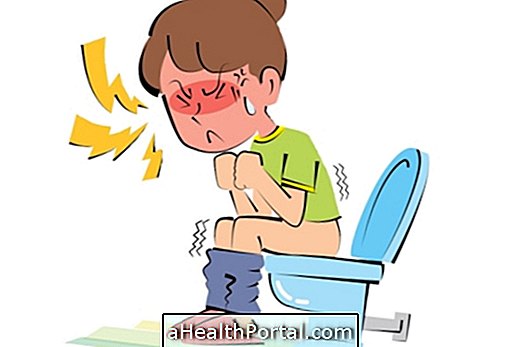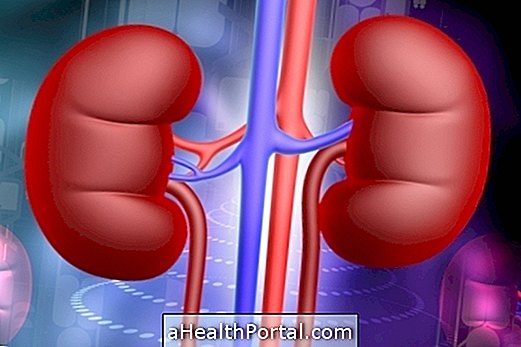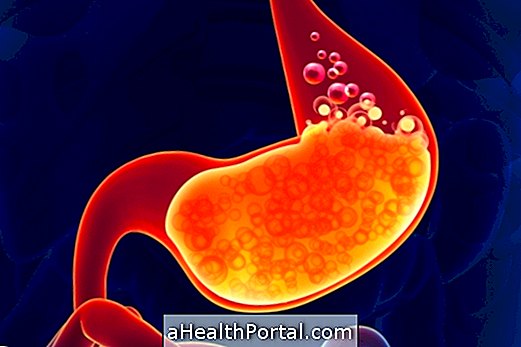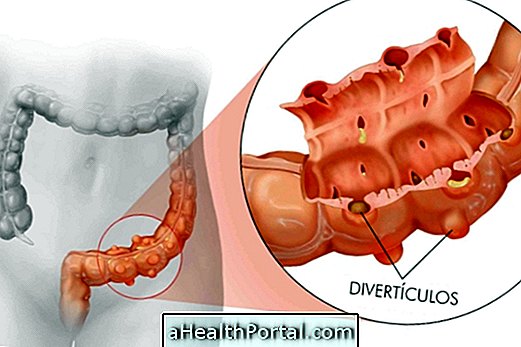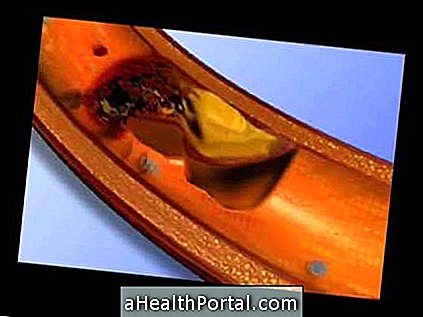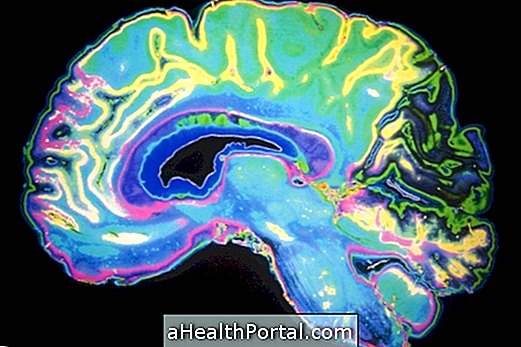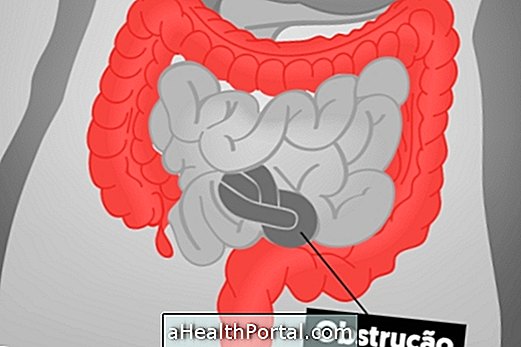Appendicitis is the inflammation of a part of the intestine known as the appendix, which is located in the lower right part of the abdomen. Thus, the most typical sign of an appendicitis is the appearance of a sharp and severe pain that can also be accompanied by a lack of appetite, nausea, vomiting and fever.
Normally, inflammation of the appendix occurs due to the accumulation of feces and bacteria inside the appendix and, therefore, can appear at any time in life. However, the specific causes are not yet fully understood.
To treat this problem, the appendix must be removed as soon as possible through surgery indicated by the doctor, to avoid more serious complications such as rupture of the appendix, which can lead to a generalized infection. So, if appendicitis is suspected, it is very important to go to the hospital immediately to have tests and confirm the diagnosis.

How to identify appendicitis
If you think you may have appendicitis, select your symptoms from the list of the most common signs and find out what your chances are:
- 1. Abdominal pain or discomfort
No Yes
- 2. Severe pain in the lower right side of the belly
No Yes
- 3. Nausea or vomiting
No Yes
- 4. Loss of appetite
No Yes
- 5. Persistent low fever (between 37.5º and 38º)
No Yes
- 6. General malaise
No Yes
- 7. Constipation or diarrhea
No Yes
- 8. Swollen belly or excess gas
No Yes

These symptoms are more common in children and adolescents, but acute appendicitis can occur at any age.
In addition, when the pain is very weak but lasts for more than a month, it is considered chronic appendicitis and is more common from the age of 40, happening slowly. This pain may even lessen with the use of painkillers and anti-inflammatory drugs, but it always reappears in the same place. To know more details about the symptoms read: How to know if it is appendicitis.
How to confirm the diagnosis
Often the diagnosis of appendicitis can be made clinically, that is, only by palpating the site and evaluating the symptoms by a doctor.
Tests to identify appendicitis
Often the doctor may need to order some tests to confirm the diagnosis, especially when the symptoms are not classic:
- Blood test: allows you to assess the amount of white blood cells, which help to confirm the presence of inflammation in the body;
- Urine test: helps to confirm that the symptoms are not being caused by a urinary tract infection;
- Abdominal ultrasound or computed tomography: allow to observe the enlargement and inflammation of the appendix.
A good way to try to find out at home if it could be an appendicitis situation is to lie on your back and then press with one hand on the lower right side of your stomach. Then, the pressure must be relieved quickly. If the pain is more severe, there are good chances of being appendicitis, since if the pain does not change, it may be a sign of another problem. However, it is always important to go to the hospital to identify what is going on and to start proper treatment.

Main causes of appendicitis
In most situations of appendicitis, it is not possible to identify the specific cause of inflammation of the appendix, however, obstruction of that location of the intestine seems to be the most frequent cause. When this happens, the accumulation of feces and bacteria inside can occur, which ends up causing an infection and inflammation.
It is believed that obstruction of the appendix may arise due to several relatively common situations such as a strong blow to the site or worms, but also due to more serious problems such as intestinal tumors, for example.
Read more details about the causes and diagnosis of appendicitis.
How the treatment is done
The most used way to treat appendicitis is to have surgery to remove the entire appendix. This surgery is known as an appendectomy, in which the appendix is removed through a small cut in the abdomen. Therefore, the person usually needs to be hospitalized after treatment for 1 to 2 days, in order to assess that the intestine is working properly and that there are no complications from surgery such as bleeding or infection.
Even in cases where the diagnosis is not accurate, surgery can be recommended, mainly because the risk of actually having an appendicitis and ending up breaking is higher. See in more detail how the surgery is done and how the recovery is.
If the appendix is not removed, it may rupture, known as suppurative appendicitis, increasing the possibility of releasing bacteria in the abdomen and leading to the occurrence of peritonitis and the formation of abscesses in the abdomen.
Possible complications
When appendicitis is not treated properly, the appendix can end up rupturing and causing two main complications:
- Peritonitis: is the infection of the lining of the abdomen by bacteria, which can cause damage to the internal organs. Some symptoms that may indicate peritonitis include general malaise, an increase in fever, swelling in the belly and a feeling of shortness of breath;
- Abdominal abscess: happens when the appendix ruptures and pus accumulates around it, causing the appearance of a pouch filled with pus.
Both situations are serious and can be life-threatening. For this reason, treatment should be carried out as soon as possible. Treatment often includes surgery and the use of antibiotics directly into the vein to fight infection by bacteria.
In addition, if an abscess is present, the doctor may need to insert a needle through the belly to remove excess pus before operating.
Is having appendicitis during pregnancy dangerous?
It is dangerous to have appendicitis in pregnancy because the appendix can rupture, spreading bacteria inside the abdomen that can cause serious infections for the mother and baby.
Appendicitis in pregnancy has the same symptoms and surgery is also the only treatment option, not harmful to the baby's development.
Thus, it is very important that the pregnant woman, when experiencing intense and continuous pain on the right side of the abdomen, immediately go to the hospital to make the diagnosis and perform the surgery. Know the risks of appendicitis in pregnancy.
Was this information helpful?
Yes No
Your opinion is important! Write here how we can improve our text:
Any questions? Click here to be answered.
Email in which you want to receive a reply:
Check the confirmation email we sent you.
Your name:
Reason for visit:
--- Choose your reason --- DiseaseLive betterHelp another personGain knowledge
Are you a health professional?
NoMedicalPharmaceuticalsNurseNutritionistBiomedicalPhysiotherapistBeauticianOther
Bibliography
- MAYO CLINIC. Appendicitis. Available in: . Accessed on 05 Mar 2019
- HEALTHLINE. Everything You Need to Know About Appendicitis. Available in: . Accessed on 05 Mar 2019
- NHS. Appendicitis. Available in: . Accessed on 05 Mar 2019
